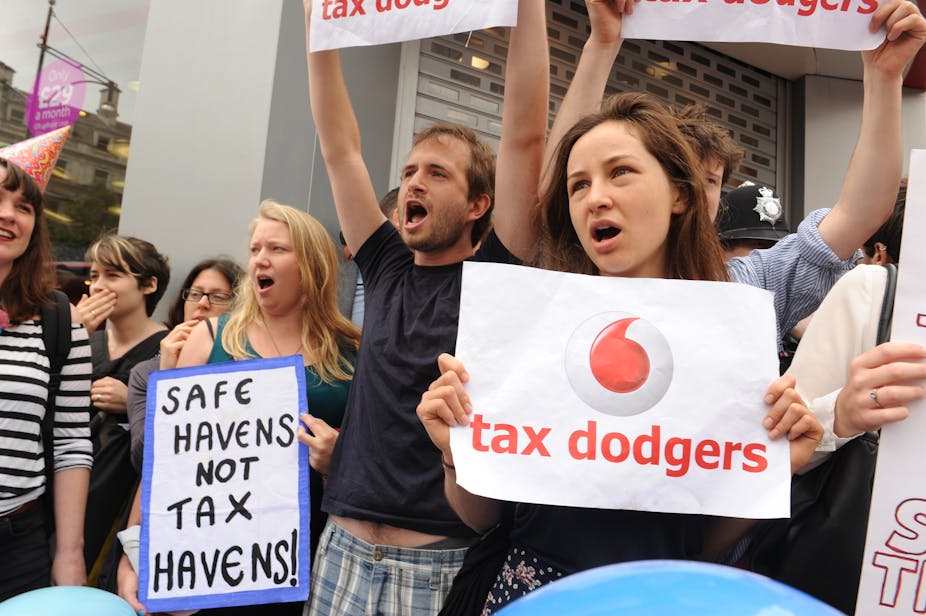Some may be surprised to hear the Corporate Tax Association (CTA) is calling for greater transparency around the tax paid by companies. One may ask why major companies would prefer to enhance transparency of their tax information.
The CTA is the representative body for major companies in Australia on corporate tax issues. In its submission to the Senate inquiry into corporate tax avoidance, it claimed that it “has for some time been urging its members to provide more useful and concise information about their own tax performance”.
Nothing to hide – or nowhere to hide
So, why would a lobby group for companies urge them to ‘fess up about their tax affairs? For many, they have nothing to hide. For others, they will soon have nowhere to hide, as the trend toward increasing transparency sweeps the globe.
Companies that have nothing to hide should not be reluctant to disclose that they have been paying their fair share of tax. They may want to distinguish themselves from those that have aggressively avoided tax. Corporate tax avoidance remains a very topical and controversial issue, and those that don’t disclose are likely to be hounded by journalists and activists until they do.
Don’t forget, companies that pay an effective tax rate less than the standard 30% company tax rate may have legitimate reasons.
For example, their relatively low effective tax rates may be due to carried forward tax losses from previous years, or significant foreign businesses that are subject to foreign income tax below 30%. This kind of information is important for the public to have an informed debate on corporate tax avoidance.
The CTA’s call for increasing transparency may also represent its acceptance of the reality that increasing corporate disclosure is the global trend. One of the major breakthroughs of the OECD’s Base Erosion Profit Shifting (BEPS) project is the country-by-country reporting regime. Under the regime, a multinational enterprise would have to disclose, among other things, the amount of income, profits, and tax paid in each of the countries that it has operations.
The OECD’s country-by-country regime is expected to be implemented next year. The country-by-country information will be very valuable to tax administrations to identify targets for tax investigations and audits.
Burying the detail
While multinational enterprises may be willing to disclose more tax information in response to the public demand, they may attempt to hide as much information as possible at the same time.
Take, for example, UK-based firm Vodafone, which has copped criticism that it has not paid any UK corporate taxes for a number of years.
It has recently produced more detail on its tax affairs, but two features stand out in Vodafone’s disclosure. First, the amount of corporate tax payment is buried among over 60 other taxes and charges – including not only customs duty and social security tax, but also garbage tax, municipal waste tax, numbering tax – with the total shown as “direct revenue contribution: taxation”.
Second, the data about Vodafone’s key vehicle for tax avoidance – a subsidiary established in Luxembourg which is responsible for the group’s “global procurement, financing and roaming operations” – was hidden among other group companies that act as holding companies for an investment in the US, with the aggregate numbers for those entities shown under the caption “Non-OpCo”.
After the OECD’s country-by-country reporting regime is implemented next year, it will be much more difficult for multinationals to hide the detail on their tax affairs in the way Vodafone has tried to do in the past.

We need transparency – here’s why
Apple offers a telling example of why government agencies need full transparency in the deals they make with firms so citizens are not left shortchanged.
In Apple’s submission to the Senate enquiry into corporate tax avoidance, it disclosed that “the ATO and Apple [had entered] into an APA in the early 1990s”. APA stands for “Advance Pricing Agreement”, which is a standard practice around the world under which a tax administration agrees with a taxpayer in advance the transfer pricing arrangement of the corporate group. This practice is designed primarily to reduce compliance costs and to increase certainty for both parties.
Interestingly, Apple further disclosed in its submission that “despite the company’s efforts to renew, [its] APA has expired, but, [Apple] was and remains willing to enter into a further APA with the ATO for future years”. It appears that the ATO is reluctant to enter into another APA with Apple.
The reason behind the ATO’s reluctance may lie in the fact that it now has a full picture of the international tax avoidance structure of Apple, which has been a secret until 2013 when it was revealed in a US Congressional hearing. It is possible that when the ATO entered into the first APA with Apple in the early 1990s, it was not aware that a significant amount of Apple’s profits has been sitting in its subsidiary in Ireland and those profits have never been taxed anywhere in the world.
The ATO is correct in refusing another APA with Apple until it sorts out how much of those tax-free profits sitting in Ireland should be taxed in Australia.
The Apple story highlights that despite the best efforts of the ATO, it cannot properly do its job unless it possesses full and complete information about a company’s tax arrangement.
This is the transparency that the ATO really needs, and a properly designed country-by-country regime will go a long way in achieving this goal.
So it should be no surprise groups like the CTA are urging companies to boost their tax transparency; if they don’t do it now, they will be forced to do it soon anyway.

